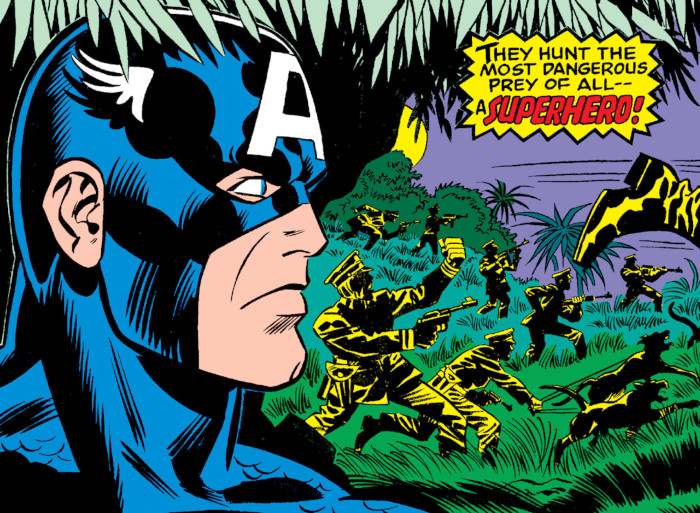
When Steve and Sam foil an attempt by police from south of the border to arrest their friendly waiter, the cops decide to arrest Steve instead! Hey, beats heading home empty handed! What looks like it’s going to be a story about Cap (and maybe Falcon?) locked up in a Central American prison takes several odd turns: Cap is never locked up, Sam never even arrives there, and then a fish monster shows up! These three issues conclude with the coming of a then-new Cap villain who we all know and loathe. Tim and Emmet try to avoid saying “Ay caramba!”
Brought to you by:
Podcast: Play in new window | Download
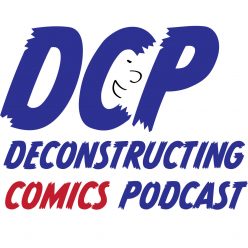
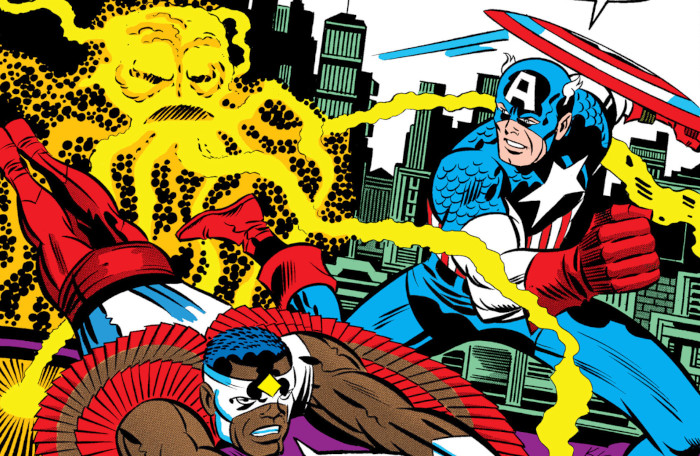
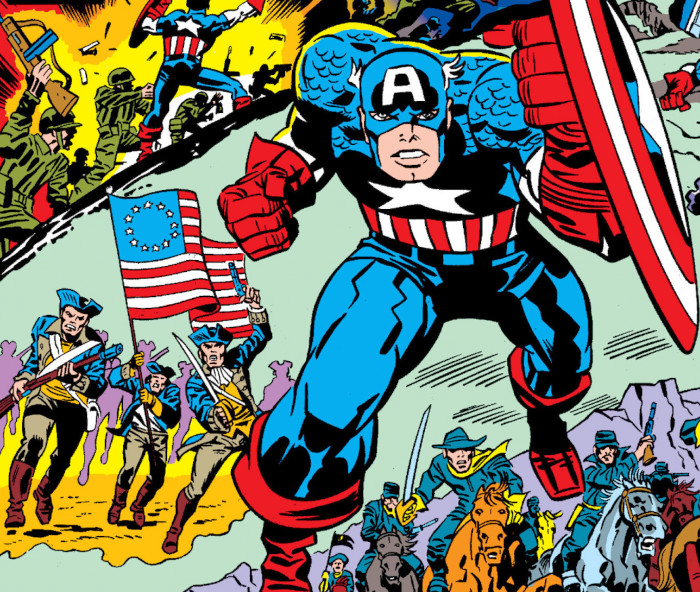 Captain America was the obvious choice of a character to help Marvel celebrate the USA’s bicentennial in 1976. The job of doing that went to Jack Kirby, co-creator of the character. Naturally, that meant a story full of hard-hitting moments, and one that gets a bit treacly at the end, but also doesn’t back away from difficult moments in US history. This week, Tim and Emmet discuss the treasury-size special Captain America’s Bicentennial Battles.
Captain America was the obvious choice of a character to help Marvel celebrate the USA’s bicentennial in 1976. The job of doing that went to Jack Kirby, co-creator of the character. Naturally, that meant a story full of hard-hitting moments, and one that gets a bit treacly at the end, but also doesn’t back away from difficult moments in US history. This week, Tim and Emmet discuss the treasury-size special Captain America’s Bicentennial Battles. Cap and the Falcon have found the underground bunker of the aristocratic forces hoping to take over America on the Bicentennial, but the location of their secret weapon, the Mad Bomb, is still a mystery. What next? How about a love story? But wait a minute – this love story between Cap and a sick young woman seems to be here for symbolism. Tim and Emmet follow our heroes to the explosive conclusion of the Mad Bomb storyline in Captain America and the Falcon 198-200!
Cap and the Falcon have found the underground bunker of the aristocratic forces hoping to take over America on the Bicentennial, but the location of their secret weapon, the Mad Bomb, is still a mystery. What next? How about a love story? But wait a minute – this love story between Cap and a sick young woman seems to be here for symbolism. Tim and Emmet follow our heroes to the explosive conclusion of the Mad Bomb storyline in Captain America and the Falcon 198-200!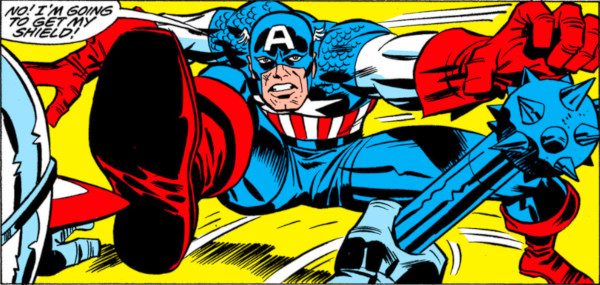
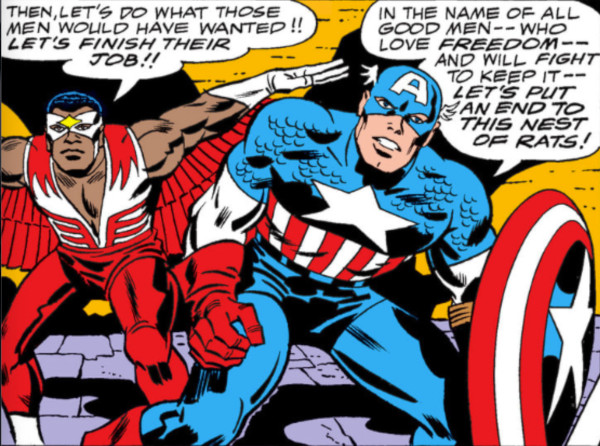
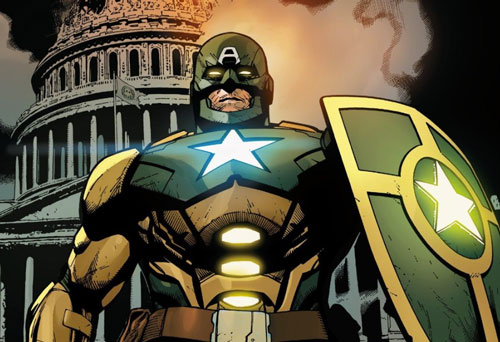
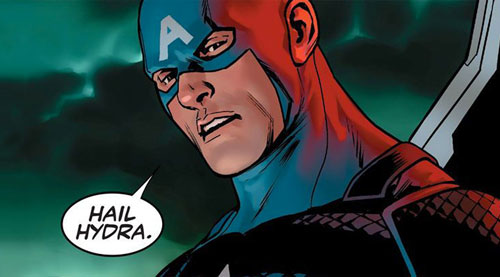 The last two words that anyone expected to see in Captain America’s word balloon were “Hail Hydra,” but sure enough, that’s what happened in Captain America: Steve Rogers #1 in 2016. The outcry Marvel heard back for this move was even bigger than they had anticipated.
The last two words that anyone expected to see in Captain America’s word balloon were “Hail Hydra,” but sure enough, that’s what happened in Captain America: Steve Rogers #1 in 2016. The outcry Marvel heard back for this move was even bigger than they had anticipated.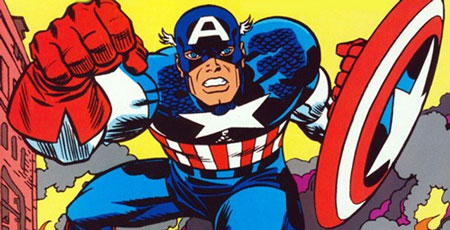
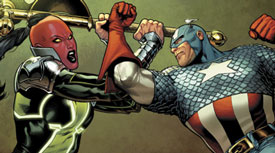 Crossover events have become ubiquitous fare from Marvel and DC, with smaller publishers recently jumping on the bandwagon. Lots of us complain about them, and yet, buying ironically is still buying. Tim is joined by
Crossover events have become ubiquitous fare from Marvel and DC, with smaller publishers recently jumping on the bandwagon. Lots of us complain about them, and yet, buying ironically is still buying. Tim is joined by